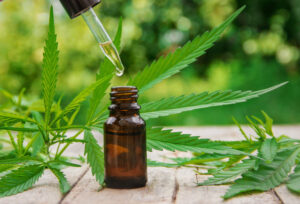When did the war on drugs actually start?
Ask anyone who lived in the 80s, what were some of the decade’s most memorable moments? You may hear of incredible technological advancements, such as the personal computer, space shuttles, and the walkman. Or perhaps you may hear the cultural pillars such as MTV and blockbuster movies, that were also pioneers in the digital revolution.
To some, the decade was a period of the New Wave, a social revolution. Through the lens of the gay community, the 80s were a gruesome, life-threatening nightmare. The 80s saw the birth of HIV/AIDS and the continuous battle to fighting the stigma surrounding the virus and the gay community. In this 2 part piece, we dive into how the gay community’s ever-lasting fight against a deadly virus took place.
What is HIV?
Human Immunodeficiency Virus, or HIV, is a virus that attacks the body’s white blood cells. These white blood cells (CD4) are the key components to fending off any infections or diseases that may enter your body. If caught, symptoms are flu-like in the early stages. After some time, the virus will have heavily damaged a majority of the body’s immune system, the body becomes weak, and is prone to the deadly disease of AIDS. Acquired Immunodeficiency Syndrome (AIDS), is the last stage of HIV infection. Patients who have received treatment for HIV are protected against AIDS with medication that effectively stops HIV. Patients often live long and healthy lives with proper treatment. Regardless, the virus is still one of the most lethal existing diseases there are.
If you thought things couldn’t get much worse, think again. An impact we can argue is more frightening than the virus itself: the homophobic backlash of the 80s. From GRID to AIDS The virus’ (AIDS) first given name by the CDC was GRID, Gay-Related Immune Deficiency. You read that right. Gay-Related Immune Deficiency was the official, government-assigned name for a newly discovered fatal virus.
The negative stigma and false information
The term itself had done a great deal of damage to the gay community at the time. By saying “Gay-related”, you directly create the impression that only gay and bisexual active persons can carry that disease. Not only does this create unsubstantiated fear towards that community, but you are painting a completely incorrect image of how the virus can be transmitted. People really believed the virus to only be carried by gay men. Can you imagine the fatal repercussions such a rumor had on sexually active members, regardless of sexual orientation?
This further distanced members of the gay community from friends, families, and the rest of society. It was only until 1982 that the CDC renamed GRID to Acquired Immune Deficiency Syndrome, AIDS. However, a simple change of names wasn’t enough to cease any and all stigma and fear surrounding the gay community. Terms such as “gay plague” still circulated in major media coverage, further tarnishing the reputation of a struggling group of Americans, wanting to be heard and helped Legality is no guide for morality.
The abrupt onset of the AIDS pandemic, as well as the initial absence of viable medicines, galvanized the patient community into demanding that promising drugs be developed and made available sooner rather than later. Drug availability could have been achieved in one of two ways. First, funds could have been disbursed through clinical trials, all sponsored by the government. Reagan was President at the time. He served two terms, from 1981-1989. The Reagan administration envisioned drastically cutting domestic spending. A majority of their policies stiffly affected public health services’ funding, and therefore their ability to properly respond to the AIDS epidemic.
Perpetuating the stigma from the top
The President’s homophobic administration was also notorious for denouncing homosexuality. In his first 4 years in office, publicly, although they were well known by half his term. The second form through which a drug could have become available was through private research. Pharmaceutical companies in the U.S. always tend to have a larger financial than medical agenda. The population of patients with AIDS didn’t present enough profitable margins for them to partake in any study. The fight for a cure came to light when the San Francisco Board of Supervisors (SFBOS) donated a compiled $3.1 million towards AIDS programs. In Jun e of 1983, the city of San Francisco opened the world’s first AIDS clinic. The fight continued on behalf of some of the countries’ most prominent gay rights activists, who were no longer fighting for equality, but for survival.
Even with newly acquired medication to treat the virus, patients still dealt with terrible symptoms. AZT, the leading drug at the time, merely extended life expectancy by a few months. The drug came with side effects such as a loss of appetite and nausea, which were already caused by the very virus it was fighting. Cannabis and its beneficial cannabinoids such as THC were found to greatly help patients fight these symptoms. However, under the political circumstances, patients with AIDS seeking symptom relief were faced with a second complication.
The 80s witnessed one of this country’s most devastating and expensive failures: the war on drugs. The Reagan Administration had attempted a massive movement to criminalize any and all substances classified as a drug. First on the executioner’s list, cannabis. The federal government’s Public Health Service shut off the only legal source of supply when a large number of AIDS patients wanted and needed cannabis.
Fast-forward to today
With today’s societal movements, HIV/ AIDS and cannabis are no longer the dark and underground topics they were 40 years ago. An increasing amount of the global population is getting tested for the virus. In 2020, 1.5 million new HIV cases have been reported. The World Health Organization states that in 2019, 68% of adults and 53% of children living with HIV globally were receiving lifelong antiretroviral therapy (WHO, 2020). With an informed population, HIV and AIDS can be addressed much more openly, people can get tested, stay protected, get informed, and live thriving lives with HIV. On the same token, an increasing number of the American population is talking openly about cannabis and its medical benefits. A reported 67% of Americans are in favor of national legalization.
In Part 2 of this piece, we will explore exactly how cannabis can treat symptoms, and what medical research is being undertaken in the fight against HIV and AIDS.
Sources
Szulakowska, A. S., & Milnerowicz, H. M. (2011). Cannabinoids – Influence on the Immune System and Their Potencial Use in Supplementary Therapy of HIV/AIDS. InTech Open.
Cichocki, M. C. (2021, May 21). How HAART (Highly Active Antiretroviral Therapy) Works. Verywell Health. https://www.verywellhealth.com/haart-highly-active-antiretroviral-therapy-48967




